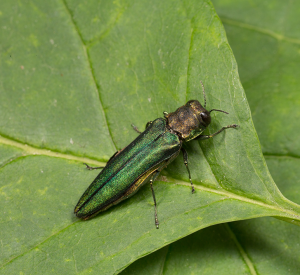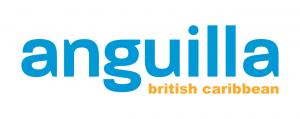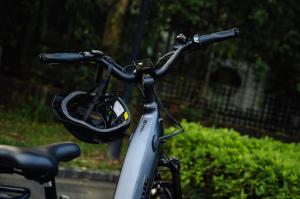Many myths are floating around about ash trees affected by Emerald Ash Borer. The truths and myths behind each of them are now explained.
MINNEAPOLIS, MINNESOTA, USA, September 20, 2023/EINPresswire.com/ — The Emerald Ash Borer (EAB) has been a concern for over two decades, but misinformation and confusion still persist. It’s not uncommon for people to receive inaccurate information from arborists, leading to questions about the fate of their ash trees. To ensure the best course of action, it’s crucial to consult a reputable arborist and seek a second opinion.
A posting from NextDoor with false information, “The arborist in my area said they are not treating the trees because of the drought the last 3 years. The drought is making the beetle infestation worse. So if you treat, and we remain in a drought, the tree will still be dead next year.” ~ Michelle F.
True or False – There is no way to save an ash tree, it must be cut down.
While it is partially true, it depends on the tree’s stage of decline. If a tree is 30-40% dead, removal is often necessary. However, treatment can help preserve the portions of the tree that are still alive.
True or False – If my tree gets infested, it is as good as dead.
This is mostly false. EAB infestations are not immediately visible, with significant damage typically occurring in year three or four. Early treatment is more effective than attempting to save a severely infested tree.
True or False – My tree looks great, so I don’t need to treat it.
False. Unlike Dutch Elm Disease, which relies on external factors, EAB actively seeks out ash trees. Without treatment, EAB infestations are likely to occur.
True or False – The drought has been so bad that treating the tree won’t make a difference.
False. Proper treatment can have a positive impact on tree health, even during drought conditions. Adequate watering is essential, with root watering probes recommended for clay soils.
True or False – The city forester told me we had to remove our ash tree.
This is partly true, but recovery is possible if the tree shows early signs of EAB and is treated with the right methods. The city forester will want to know the treatment used, with Emmamectin Benzoate being a preferred option.
True or False – The treatment for EAB is only kind of effective.
This is mostly false. The effectiveness of treatment depends on the active ingredient used, with studies showing that Emmamectin Benzoate provides 100% control for two years. Treatment does not have lasting negative effects on the tree.
True or False – Eventually EAB is going to kill the tree, even if treated.
False. Properly treated trees can have a normal lifespan, as EAB is an insect and not a fungal or bacterial infection.
Several treatment options are available for EAB, including professional services from companies like Save The Ash Tree Co., Davey Tree Care, or Bartlett. DIY treatments are also an option for trees with a circumference of 47 inches (15-inch diameter) or less.
Kenneth Anderson of Save The Ash Tree Co., a plant biologist with over 20 years of experience in pesticide research, emphasizes the importance of professional evaluations. Save The Ash Tree Co. offers free evaluations; simply send pictures of the entire tree to info@ashtreecare.com.
For more information or to schedule an evaluation, please contact:
Kenneth Anderson
Save The Ash Tree Co.
Email: info@ashtreecare.com
Kenneth Anderson
Save The Ash Tree
612-704-8008
email us here
Visit us on social media:
Facebook
YouTube
Tips on looking for Emerald Ash Borer
![]()
Originally published at https://www.einpresswire.com/article/654304089/addressing-misconceptions-about-emerald-ash-borer-facts-and-myths






